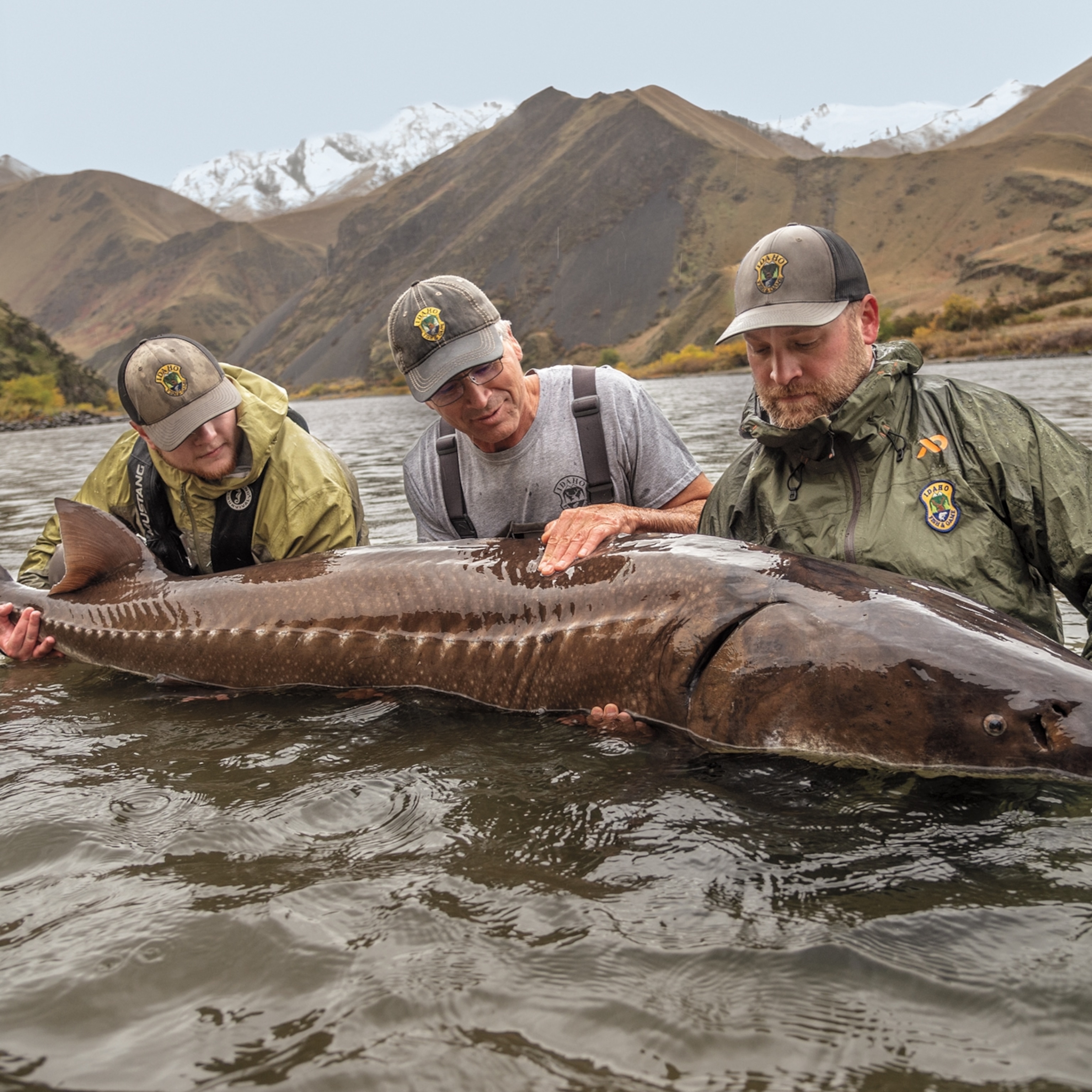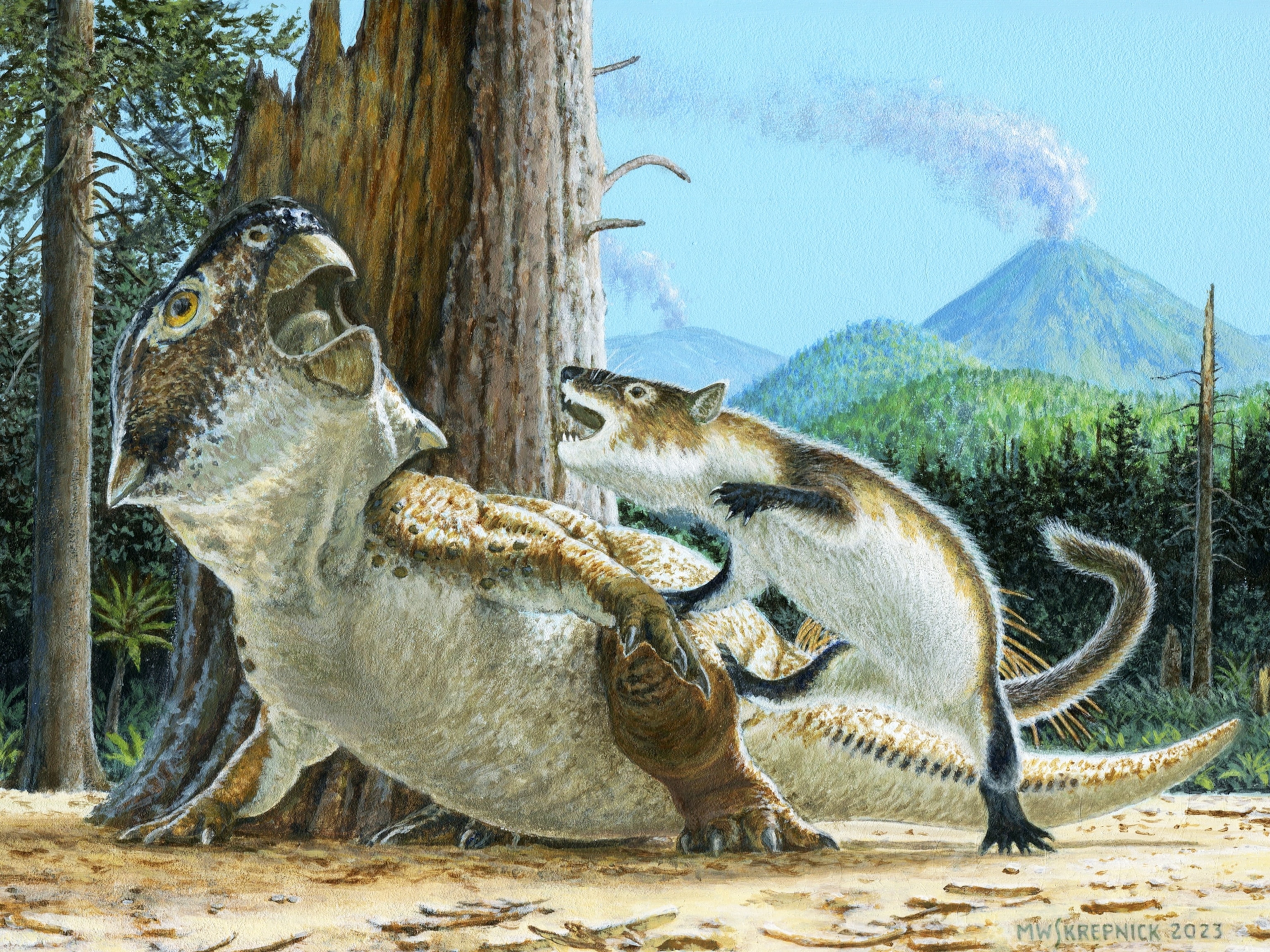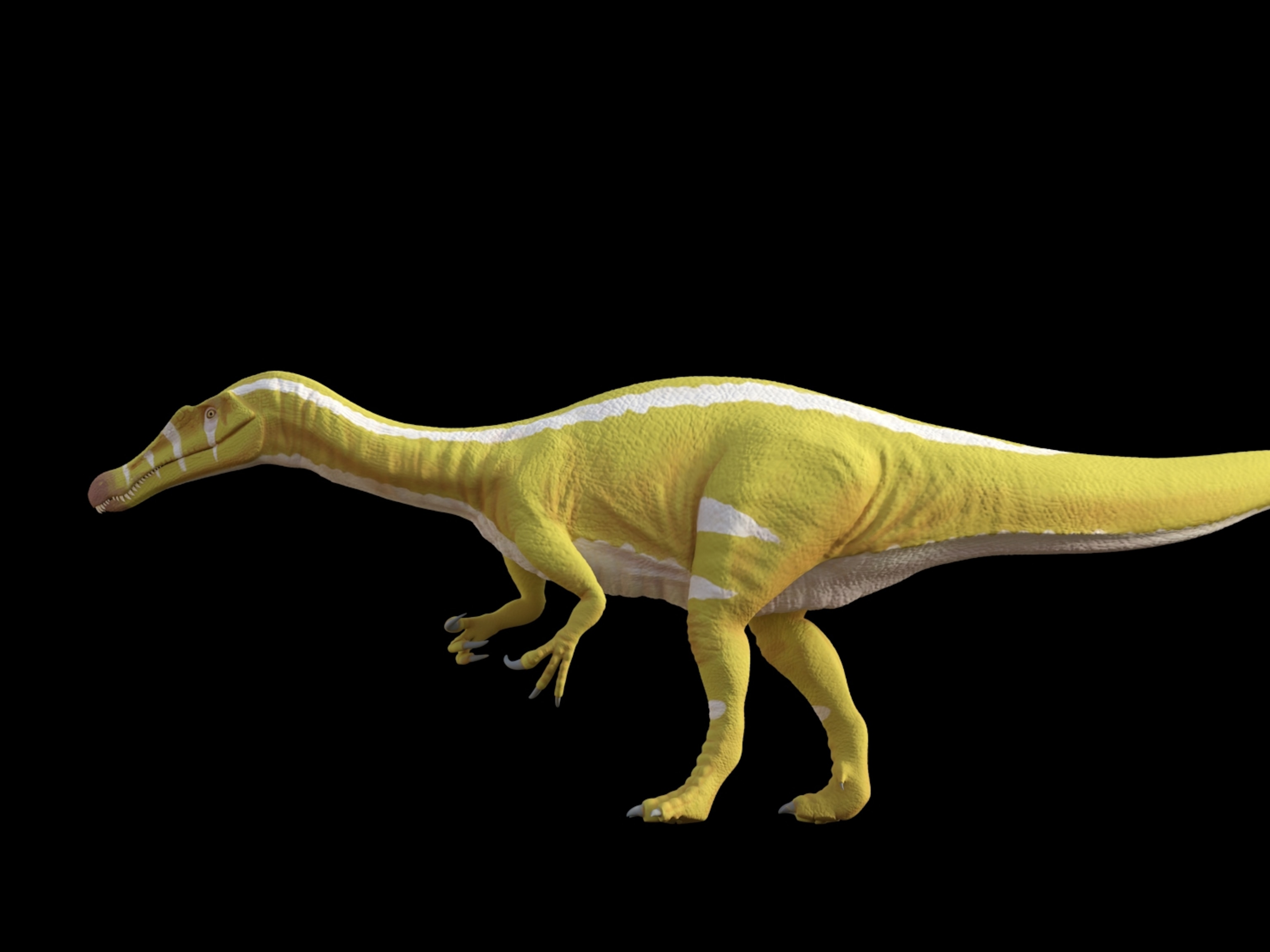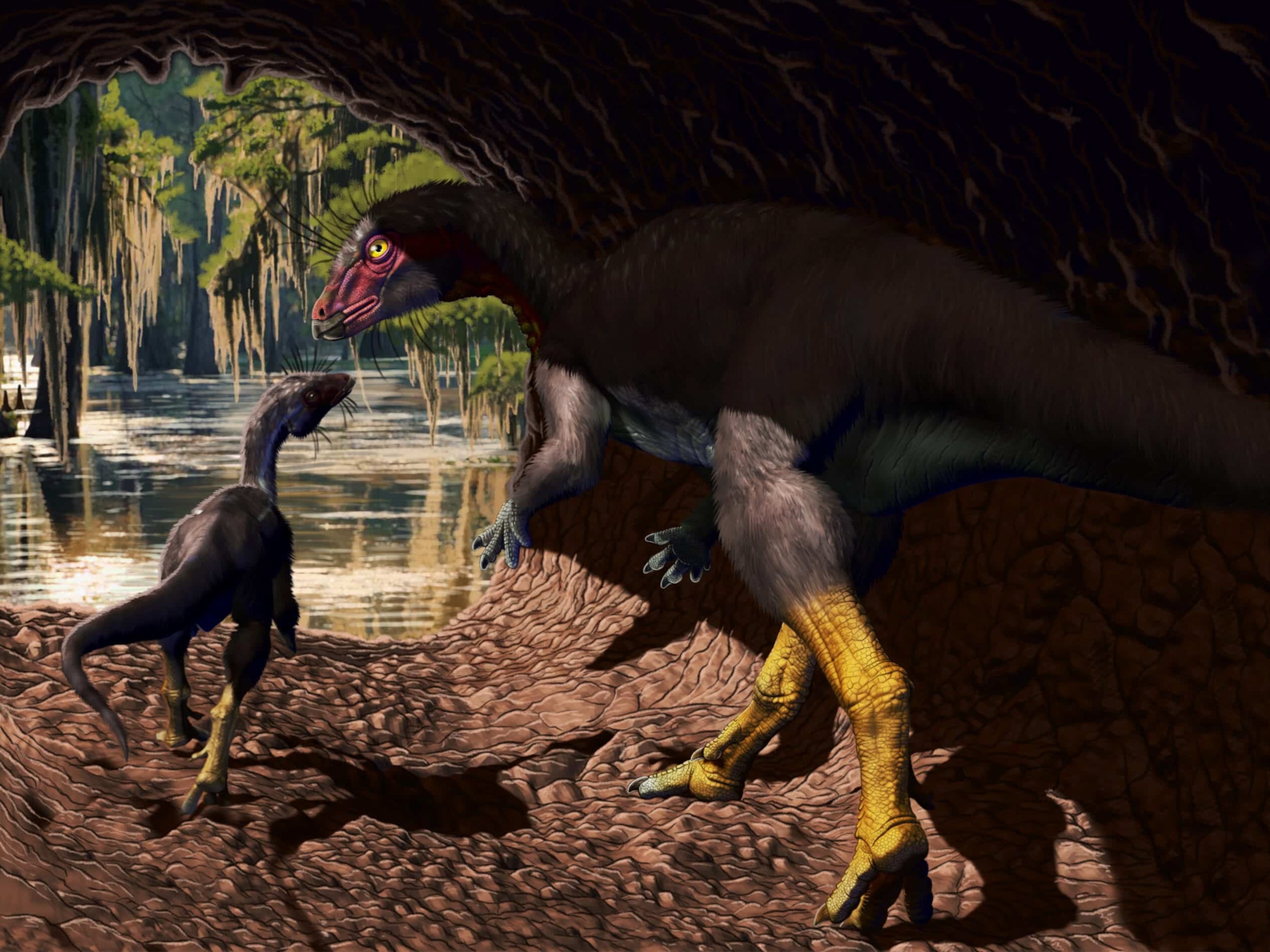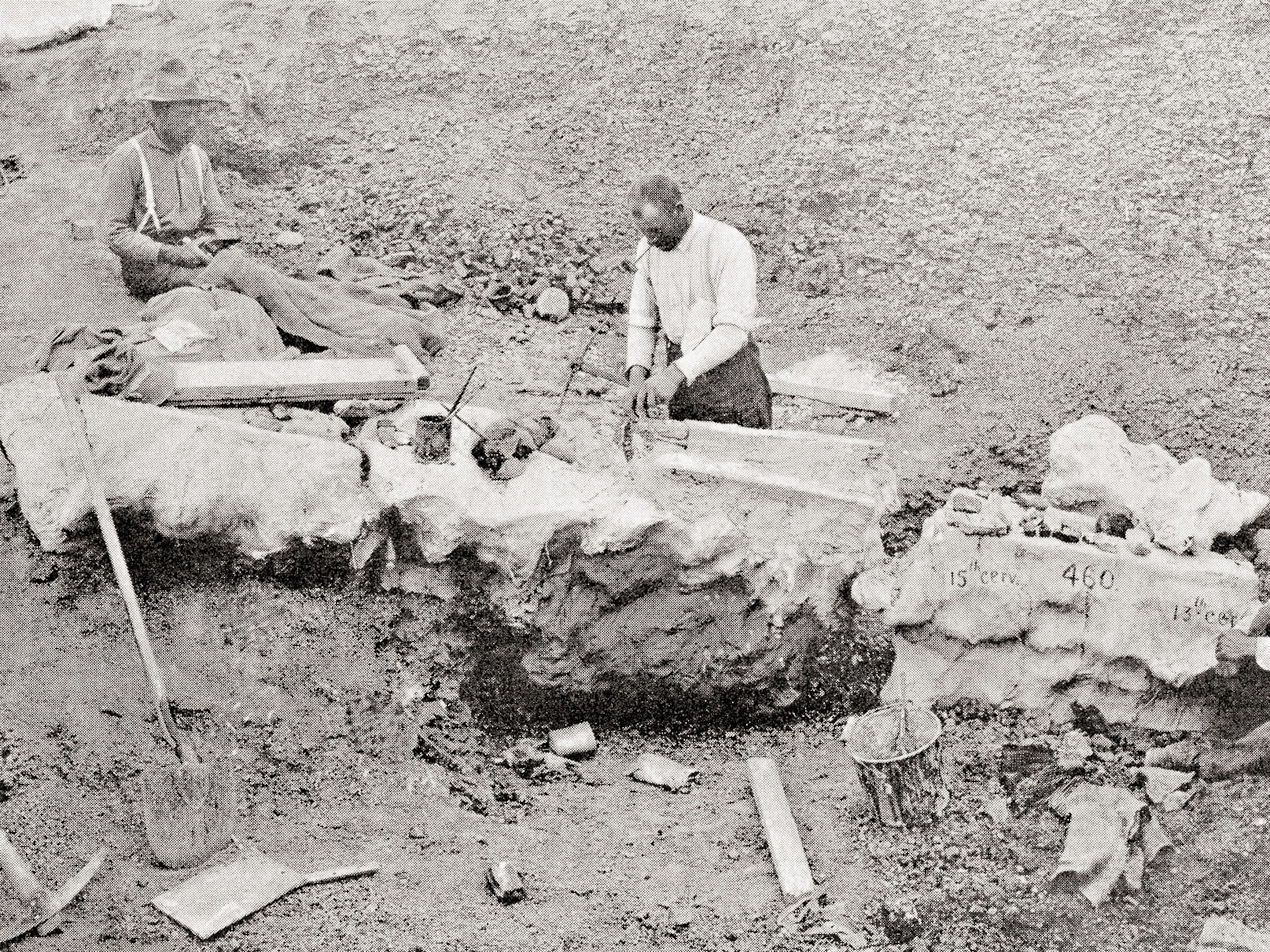Who should really be allowed to dig for dinosaurs?
The French countryside is rich in fossilized eggs, footprints, and bones. A battle is raging over who is allowed to hunt for them.

One scorching day last September, Annie Méchin crouched over a slab of red clay on a remote patch of farmland near Marseille, on France’s Mediterranean coast. Méchin was scraping away at the clay when she unearthed what looked like a tiny bone fragment. Sensing the familiar jolt of adrenaline that surged anytime she came across a fossil, she called out to her husband, Patrick, who was digging nearby. Carefully, the two amateur paleontologists, both retired and in their 60s, cleared the surface area, dug a small trench around the bone, and fashioned a plaster mold for the scientific record.
By the time night fell, the Méchins had two more molds and a growing sense of excitement that they might be onto something big. It was “a consecration of the work we do,” says Patrick. Indeed, leading experts would soon tout the potential significance of their find. But the discovery came at a tricky time for paleontology in France, where there are efforts to keep the couple—and all other amateurs—out of the digging game.

Once simmering, the debate over who gets to hunt for dinosaur fossils has become a roiling fight over credentials. On one side: French officials and scientists fed up with looting and an international black market where fossils can fetch top dollar. On the other: hobbyists working with professionals to protect and catalog the country’s geologic patrimony, filling museums with specimens that only hordes of enthusiasts could possibly collect. Each side accuses the other of being anti-science. Both sides have evidence to back themselves up. And it’s a conflict that is becoming only more urgent as the country’s paleontological wealth is increasingly understood.
France was once filled with dinosaurs. Today it has one of the most extensive fossil records in Europe, ranging from the late Triassic period to the late Cretaceous, roughly 200 million to 75 million years ago. Fossils were first discovered in the country in the 18th century, but interest in paleontology was turbocharged in the 1950s, when researchers found a large cache of dinosaur eggs in the stony southern foothills of Montagne Sainte-Victoire.
A raft of scientific and newspaper articles followed, and within months people swarmed the area around the city of Aix-en-Provence (soon nicknamed Eggs-en-Provence) in search of their own scaly orb, roughly the size and shape of a football. A clandestine market emerged. A single specimen might sell for a few thousand francs, the equivalent of several hundred euros today. In response, authorities cracked down and in 1994 turned Sainte-Victoire into a nature reserve. But dinosaur eggs kept cropping up. Between 2000 and 2004, researchers in Aix uncovered 500 or so at a plot that would become a Monoprix retail store and more than 400 eggs were found underneath the Grand Théâtre de Provence.
Professional paleontologists, many busy with research, were unable to constantly look for new fossils; amateurs increasingly filled the void. In the 1980s, the Méchins dug up a massive jawbone of an abelisaurid, a dinosaur that until then had only been found in South America. In 2022, an amateur digger discovered what turned out to be a nearly complete titanosaur in a wooded area by the town of Cruzy in southern France.

Many of those hobbyists, including the Méchins, follow paleontological methods when they dig and then share their discoveries with the scientific community. A scholarly paper published last year described the discovery of several hundred noteworthy fossils from the Ordovician period, some 470 million years ago; their finds quickly became the subject of an academic study among scientists at the University of Lausanne, in Switzerland. But there’s big money to be made in the fossil trade, and some diggers are less scrupulous.
Thierry Tortosa, curator and paleontologist at the Sainte-Victoire National Nature Reserve, has helped a few hobbyists authenticate their finds, only to discover later that the items were sold on the black market. A specialist in vertebrates of the Upper Cretaceous period, he says he is aware of private collections that have sold for hundreds of thousands of dollars, but there are surely some that have sold for much more.
In November 2024, an Apatosaurus skeleton found in Wyoming was sold to an anonymous bidder for six million dollars at an auction in a Paris suburb. In 2023, a T. rex known as Trinity was sold in Zurich for $5.4 million. Museums can’t afford these price tags. Even if they could, purchasing the finds “would open a Pandora’s box,” Tortosa says. “If we start buying fossils, everyone will say, Well, we won’t give it away because someone will buy it.”
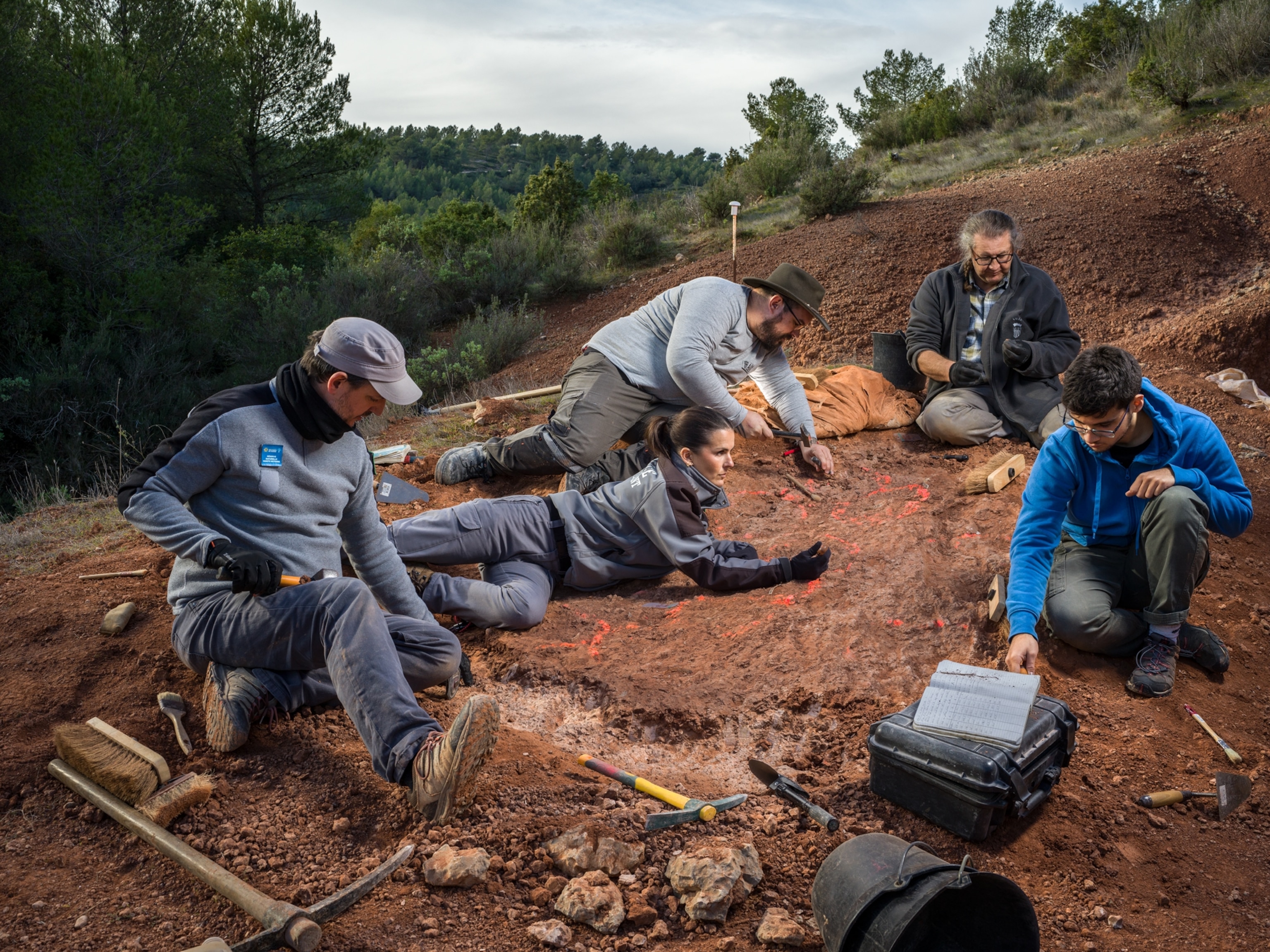
More often, fossils disappear from the public record with much less fanfare than a public auction. One particularly valuable site in Roquefort-la-Bédoule, on France’s southern coast, has been repeatedly pillaged by looters. “It’s a ruin now,” laments Tortosa. Ninety percent of private collections, he says, are sold, lost to fire, or simply abandoned. In one report, the French National Council for the Protection of Nature found France’s geologic patrimony had been “heavily impacted by the collection of fossils.”
In Normandy, the situation is especially tense. For centuries, locals have been collecting 160-million-year-old, Jurassic-period fossils, ammonites, and other treasures from the beaches below the sheer cliffs of Calvados, where some of the first dinosaur remains in France were found. For the time being, they still can. But the French government has plans to transform the area into a 23-mile nature reserve, a measure designed in part to place restrictions on who is allowed to dig at the site.
If the proposed regulations are enacted, anyone caught collecting fossils without permission could incur a 750-euro fine. Karine Boutillier, director of the local natural history museum, Paleospace, has described the government’s efforts as “the assassination of paleontology in Normandy.” In protest, her team placed red flags on every dinosaur specimen that had been collected by an amateur. Virtually the entire collection, some 27,000 fossils, was flagged.

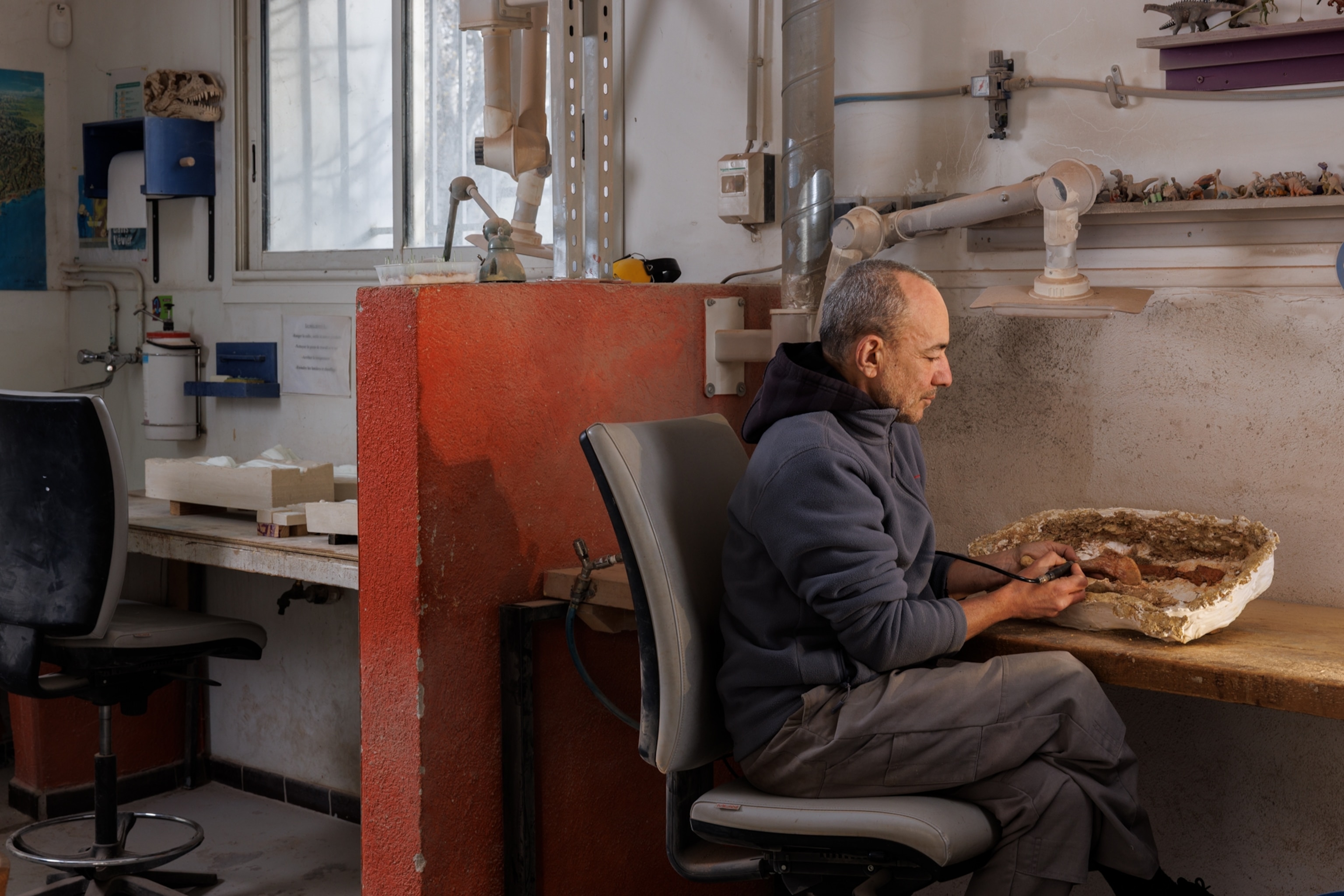
Laurent Puglisi, a doctor from Paris and an ardent amateur collector himself, argues that the Calvados cliffs represent a unique challenge. “It’s a seafront area, so if the fossils aren’t collected right away, they’ll be turned into sand in a matter of hours,” he fumes. “Collecting them is preserving them.” Puglisi has been spearheading an effort to persuade local and national authorities to relent, to little effect so far.
Éric Buffetaut, a paleontologist at France’s National Center for Scientific Research, echoes Puglisi’s concerns. “If we prevent amateurs from collecting fossils, well, there won’t be any new fossils.” Already, he says, parts of Provence have become a “research wasteland” because of overly strict regulations.
Meanwhile, the Méchins have been fortunate. Their discovery in Provence, near Marseille, last September took place on a tract of private land whose owner had given them permission to continue their research. After their initial find, the couple returned to the site four times and eventually uncovered several more fossils belonging to the same dinosaur. The collection of rust-colored bones could answer a mystery that has been bubbling in French paleontological circles for more than 30 years.
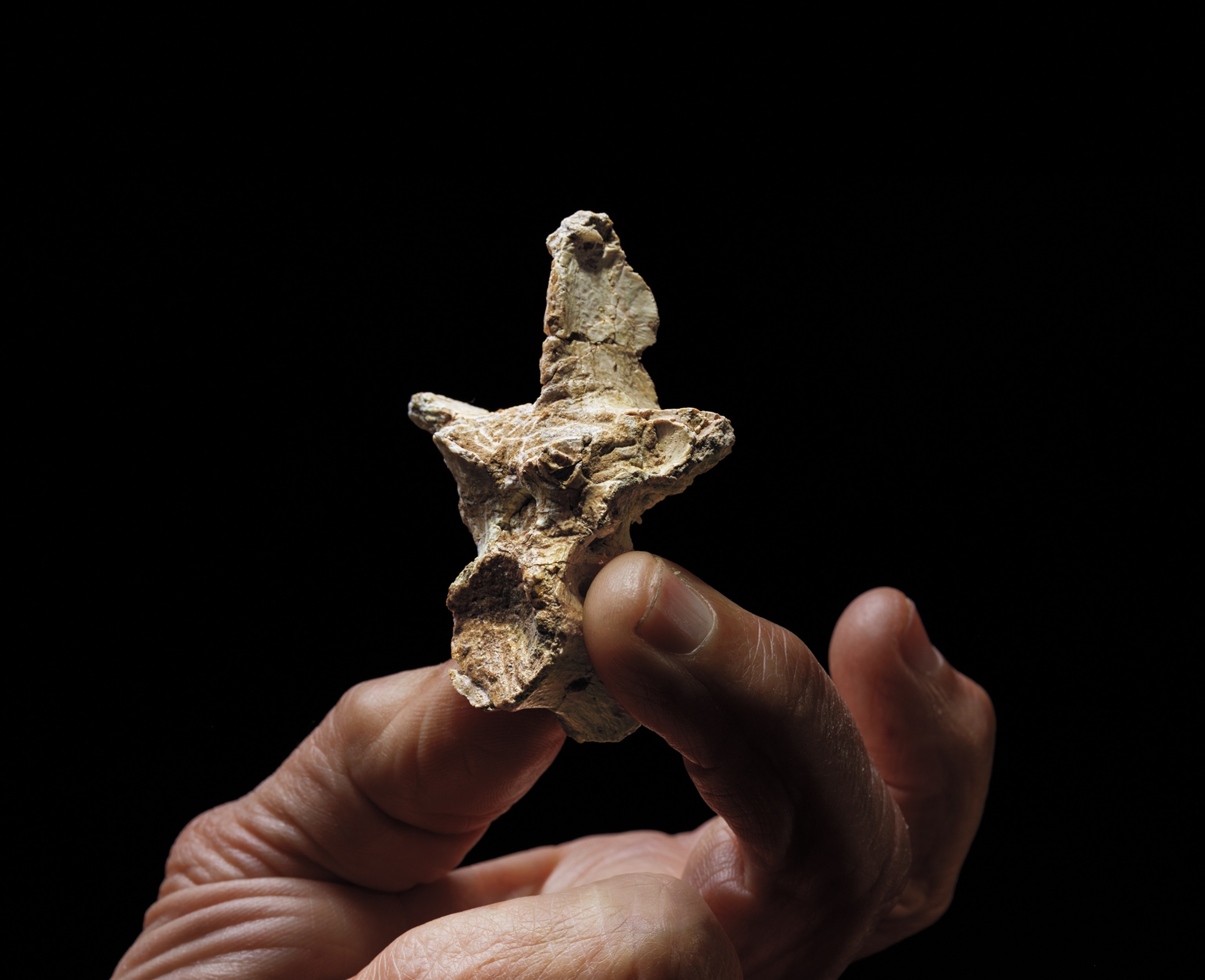
In the late 1980s, the Méchins had discovered a similar set of bones in another region of Provence. Buffetaut studied the fossils and concluded that they belonged to a raptor with a hooked talon, perhaps a few feet tall, that lived at the tail end of the Cretaceous period, just a few million years before dinosaurs went extinct, roughly 66 million years ago. Buffetaut co-authored a paper about the discovery and declared a new raptor species, naming it Variraptor mechinorum in honor of the Méchins.
Soon a team of scientists from Paris disputed the new designation, claiming the bones likely belonged to a different raptor species, and Variraptor mechinorum has been shrouded in ambiguity ever since. The Méchins’ new find could provide the missing pieces to help resolve the mystery, says Tortosa, who has examined the discovery. Yet, despite his collaboration with amateurs, Tortosa favors better enforcement of existing rules over who is authorized to dig. “Regulation doesn’t necessarily mean prohibition,” he says. But France also shouldn’t be a Wild West, where anything goes, he adds.
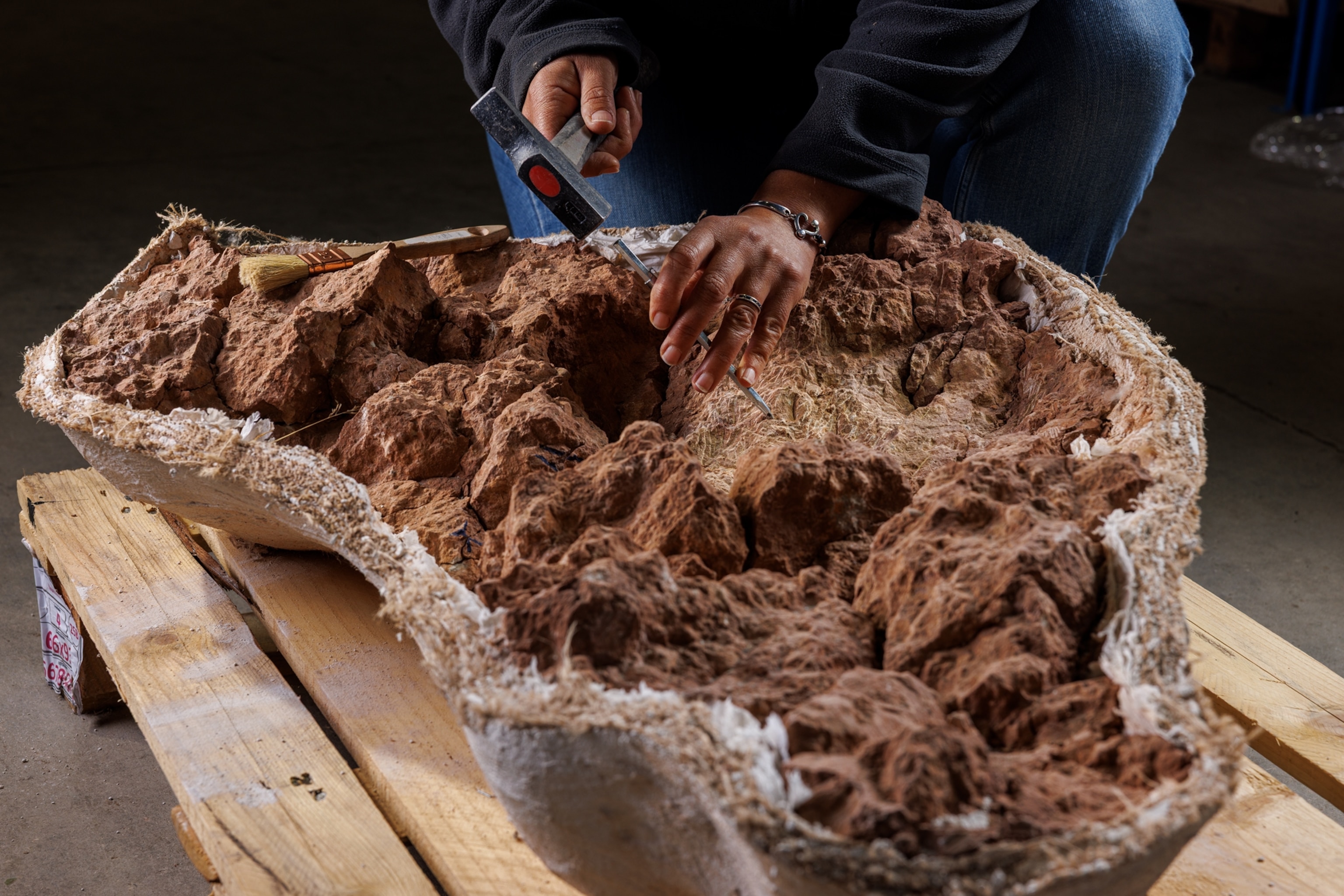
One day recently, the Méchins opened the door to a small room in an undisclosed location that houses their collection, the fruits of four decades of digging. Passing shelves that hold crocodile and alligator craniums, a giant turtle carapace, dozens of dinosaur teeth, an Ankylosaurus pelvis, and numerous fragments of Titanosaurus, Patrick and Annie paused next to a table covered by a half dozen fossils.
No entire skeleton of Variraptor mechinorum has ever been found, but the specimens laid out on the table—that included a tibia, a piece of a cranium, teeth, an arm fragment, and portions of a vertebra—represented perhaps the most complete collection to date.
“We’re not religious,” said Patrick, as he looked around the room. “But this is like our church.”



